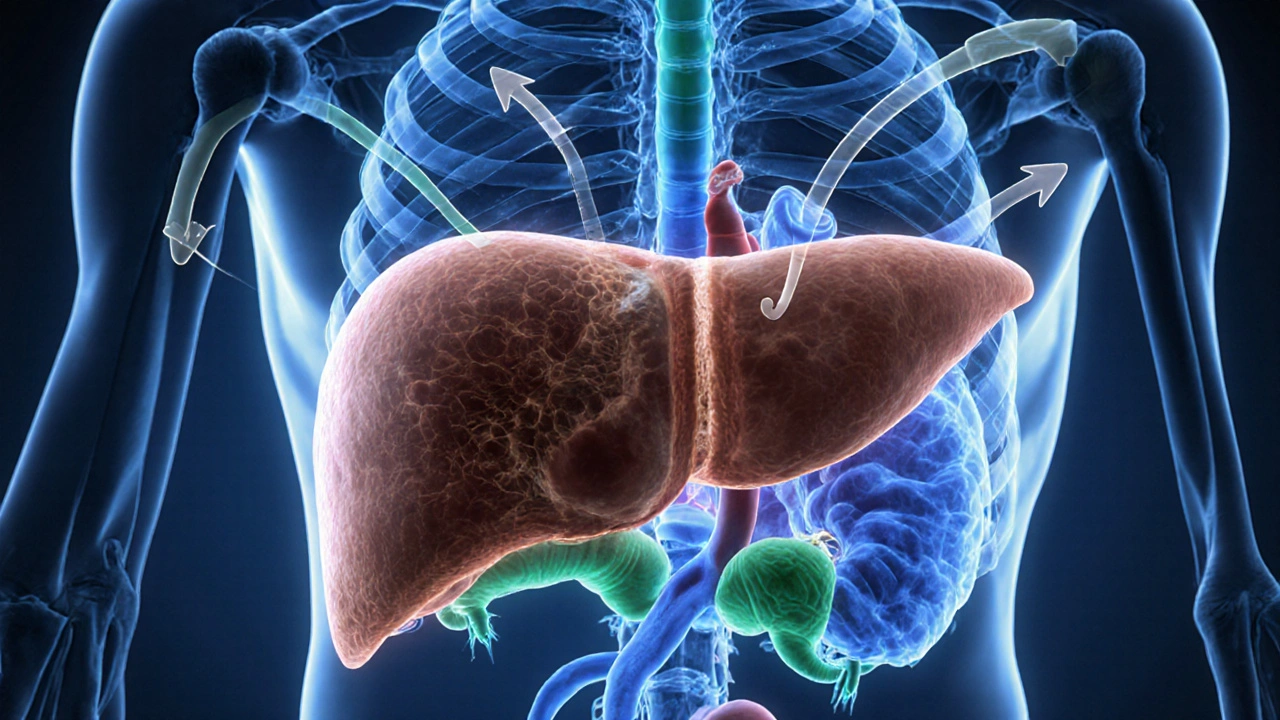Liver Disease: A Practical Overview
When dealing with liver disease, any condition that damages the liver’s structure or function. Also known as hepatic disorder, it can arise from infections, alcohol, medication, or metabolic issues. In everyday life the term usually points to three common faces: hepatitis, inflammation often caused by viruses or toxins, cirrhosis, scarring that replaces healthy tissue over time, and fatty liver disease, which builds up fat cells inside the organ. Knowing which version you’re facing helps you pick the right monitoring tools and treatment plan.
Liver disease includes hepatitis, cirrhosis, and fatty liver disease—each with its own triggers but sharing the same organ under stress. Managing it often requires regular liver function tests to track enzymes like ALT and AST, which act as early warning lights. If those numbers climb, doctors might order imaging or a biopsy to see how far damage has spread. This cycle—symptom, test, action—keeps the condition from slipping into a silent crisis.
Key Concepts and Everyday Management
One clear semantic link is that medication metabolism influences liver disease progression. Many drugs, from painkillers to antibiotics, are processed in the liver, and a compromised organ can’t clear them efficiently. That’s why physicians always ask about over‑the‑counter use before prescribing a new regimen. It also explains why the tag page includes posts about buying cheap generic medications safely; those guides indirectly touch on a big liver‑health concern: avoiding drug‑induced liver injury.
Another important connection: alcohol‑related liver disease is a leading cause of cirrhosis worldwide. Cutting back or quitting drinking can halt or even reverse early‑stage fatty changes. If you’re reading about supplements like iron or folic acid, remember that excess iron can burden the liver, especially in people with hereditary hemochromatosis. So any supplement guide should be read with a mind toward liver safety.
Nutrition plays a surprisingly big role, too. Diets high in saturated fats and sugars accelerate fatty liver, while fiber‑rich foods help the organ detoxify. Simple lifestyle tweaks—like swapping fried snacks for fresh veggies or adding a daily walk—can lower the risk of advancing from simple steatosis to cirrhosis. The posts about fiber and diet on this site echo that principle, though they focus on gut health; the gut‑liver axis means good gut habits protect the liver as well.
Screening guidelines create another semantic bridge: people with chronic hepatitis B or C should get liver ultrasounds every six months, while those with metabolic syndrome might rely on blood panels. Early detection is the secret sauce that lets clinicians intervene before scarring becomes irreversible. That’s why the collection below offers a mix of medication safety tips, supplement comparisons, and disease‑specific advice—it’s all part of a broader effort to keep the liver humming.
Finally, let’s talk about patient empowerment. Understanding the language—terms like “ALT,” “AST,” “bilirubin,” and “fibrosis stage”—gives you leverage in conversations with your doctor. When you read a guide about buying a generic drug, you’ll know to ask whether that medication is safe for your liver. When you explore a supplement review, you’ll check if the product lists liver‑friendly dosages. Knowledge turns a vague fear of “liver disease” into a manageable health plan.
Below you’ll find a curated set of articles that touch on everything from safe online pharmacy practices to specific drug comparisons. While the topics vary, each piece offers a piece of the puzzle that helps you navigate liver‑related concerns—whether you’re monitoring a viral infection, tweaking your diet, or checking how a new prescription might affect your liver. Dive in and arm yourself with the practical info you need to stay ahead of liver disease.

Liver Failure & Endocrine System: Essential Facts & Hormone Impacts
Learn how liver failure disrupts insulin, thyroid, sex hormones and cortisol, recognize symptoms, and manage hormonal imbalances for better health.
Continue Reading



